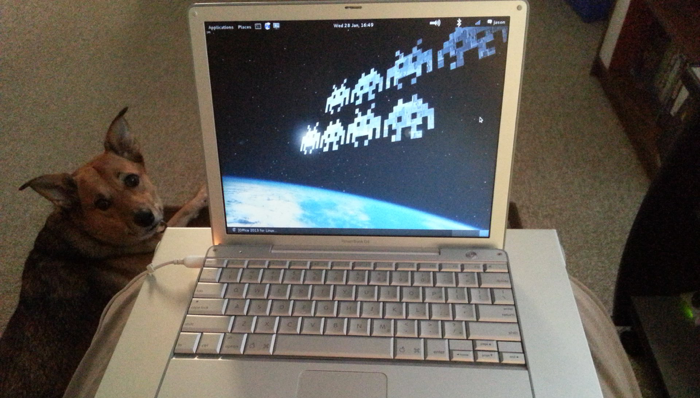Breathe new life into an old PowerBook G4 using Linux

So what do you do when you have an old PowerBook that still works but can’t run the latest operating system (OS) and software? Well, you could sell it - but it won’t fetch much at all (less than $50 in most cases).
A better option is to install a currently-supported OS that runs really well on limited hardware…….in other words, install Linux on it!
I recently installed the latest version of Debian Linux on my PowerBook G4 to make it useful again. With only 1.25 GB of RAM and a 1.5 GHz PowerPC CPU, it could only run Mac OS 10.5 (very old), and nearly all Mac software programs, including Web browsers, have discontinued support for PowerPC-based Macs. In other words, you won’t get new versions of software if you have an old PowerPC-based Mac running Mac OS 10.5….
But I love my PowerBook. I’ve written over a dozen textbooks on it. It’s followed me to hundreds of different events, and I’ve used it to give countless presentations. It’s done the work of 100 laptops and is a tribute to rugged Apple manufacturing. I want to keep using it, but its aging software makes me want to keep it hidden in the basement like Sloth from “The Goonies.”
So, I downloaded and installed the latest version of Debian Linux on it, because Debian releases current versions of their Linux distribution for many different platforms. Bottom line: Linux performs much faster than Mac OS 10.5 did, and I when I plug it into a projector to do a presentation, people will see the latest version of Firefox (called Iceweasel in Debian), as well as the latest version of other popular open source Linux software packages. The Debian desktop uses far less than 1GB of RAM and almost no CPU cycles. Basically, Linux has extended the life of my beloved PowerBook!
If you have an old PowerBook, I highly suggest doing the same. What you’ll need to do is:
- Connect your PowerBook to your home router using an Ethernet cable (the Wi-Fi driver isn’t available during Debian installation, and it needs to download many packages)
- Download and burn the ISO for the latest version of Debian Linux for PowerPC (PPC)
- Boot your PowerBook from the CD/DVD by holding down the C key at boot time
- Complete the installation
After the installation, you’ll notice that your Wi-Fi card isn’t detected, and that you don’t have sound! Luckily, you can fix both easily.
To get your Wi-Fi card working, open a terminal and switch to the root user using the su - root command. Then, edit the /etc/apt/sources.list file and add the keyword contrib after the keyword main next to each repository listed. Run the apt-get update command to update the repository list to include the contrib repositories, and then run the apt-get install b43-fwcutter wpasupplicant firmware-b43-installer command to install the firmware and driver modules for your wireless card. It should be ready to use right after the command is done, and will be persistent after a reboot.
To get sound, simply open a terminal, switch to the root user (su - root), and edit the /etc/modprobe.d/blacklist.local.conf file. Remove all the snd* entries in the file, add a single line that reads snd-powermac and reboot to let Debian autodetect the right sound driver.
That’s it!